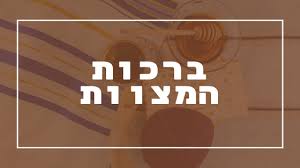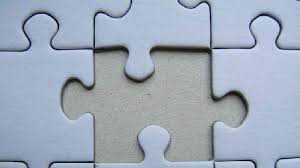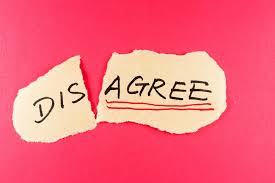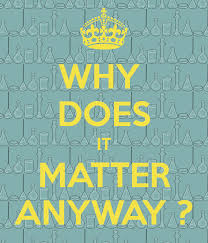Introduction to Shema and its Berachot (12) – The relationship between the blessings (4) – Rashba & the Tanya
 As we can see from a brief review, the Ramban’s position is clear: the beracha of Yotzer Or is a birkat ha-shevach, and Ahava Rabba is a birkat ha-mitzvah. Rav Hai Gaon and the Ba’alei ha-Tosafot see the berachot as linked to Shema, but one can be recited even after the Shema has been said. They do not agree with the depth of connection that the Ramban builds between the berachot and the Shema, but they do see the two as related to each other.
As we can see from a brief review, the Ramban’s position is clear: the beracha of Yotzer Or is a birkat ha-shevach, and Ahava Rabba is a birkat ha-mitzvah. Rav Hai Gaon and the Ba’alei ha-Tosafot see the berachot as linked to Shema, but one can be recited even after the Shema has been said. They do not agree with the depth of connection that the Ramban builds between the berachot and the Shema, but they do see the two as related to each other.
The Rashba himself takes a strong position against his rebbe, the Ramban, as well as in his rejection of Rav Hai and the Ba’alei ha-Tosafit. His approach appears both in his commentary on the gemara in Berachot 11b and in three separate teshuvot1. The questions that were asked of him all revolve around one of the very first comments of Rashi on Sha”s.
The first Mishna in Berachot provides a beginning and an end time for when the evening Shema may be recited. Rashi points out that, before or after that time, one is not able to fulfill the Mitzvah of reading the Shema. However, the common practice in Ashkenaz was to daven ma’ariv early, well before the time the mishna lists. Rashi is puzzled by this practice, so he asks:
רש”י על ברכות ב׳ א:א:ב, עד סוף האשמורה הראשונה…
אם כן למה קורין אותה בבית הכנסת? כדי לעמוד בתפלה מתוך דברי תורה…ולפיכך, חובה עלינו לקרותה משתחשך. ובקריאת פרשה ראשונה שאדם קורא על מטתו, יצא.
Rashi on Berakhot 2a:1:2, s.v. ad sof ha-ashmura ha-rishona
If this is the case, why do we recite the Shema in the Synagogue? In order to stand for Tefila (the Amida) from words of Torah…Therefore [when we daven ma’ariv early in shul] we must recite the Shema again after nightfall. And through the reading of the first portion of the Shema at bedtime, we fulfill [the obligation of reading the evening Shema].
There are many other answers to the question of when to recite the Shema, but the Rashba’s approach is built on the framework provided by Rashi. This structure creates two very specific problems relative to Shema and its blessings:
- If, when the Shema is recited in shul early, the individuals were not fulfilling the actual mitzvah of Shema, why should the berachot be said at all? If the berachot are linked to the mitzvah of Shema, then aren’t they, in this case, berachot l’vatala (blessings made in vain).
- If it turns out that, in fact, the Shema recited at bedtime is the “real” Shema, then shouldn’t the berachot be recited then?
These two questions animate the three teshuvot of the Rashba. I will bring one selected paragraph that explains his answer, which he repeats in each teshuva. Here is the first paragraph of סימן שיט (Teshuva #319):
שו“ת הרשב“א חלק א סימן שיט
הקורא קריאת שמע בלא ברכותיה יצא דברכות אין מעכבות. וכדתנן היה קורא בתורה והגיע זמן המקרא אם כיון לבו יצא. וגרסינן עלה בירושלמי הדא אמרה שאין ברכות מעכבות. ומיהו מסתברא שחוזר ואומר ברכות ובפני עצמן בלא קריאת שמע שכבר יצא.
ואף על פי שברכות לפני קריאתה נתקנו לאו ברכות של ק”ש כדי שתאמר היאך יברך שלא על הקריאה…שהרי אינו מברך אשר קדשנו וצונו לקרא את שמע…ולפיכך אף על פי שיצא ידי קריאה ידי ברכות לא יצא. וחוזר הוא וקורא ברכות בפני עצמן.
Shu”t ha-Rashba, volume 1, Siman 319
One who recites the Shema without its attendant blessings has fulfilled their obligation because “the berachot do not stand in the way [of the Shema]” (ברכות אין מעכבות). As it is taught in the Mishna (berachot 2:1), “If you were reading the Torah and arrived at the appropriate time for reciting the Shema – if you had intention, you can fulfill your obligation.” And the Yerushalmi says, “This teaches that the recitation of the berachot does not stand in the way of the proper fulfillment of the Shema.” Nevertheless, it makes sense that [after having recited the Shema without blessings] you should go back and say the berachot by themselves, without the Shema that you have already fulfilled.
And even though these berachot have been established before the reading of the Shema, they are not berachot of Shema, such that you might ask how can you recite these berachot without saying the Shema…For behold we do not say a blessing “that we have been made holy and commanded to read the Shema2. And therefore, even though you may have fulfilled your obligation to read [the Shema] you have not fulfilled the obligation to recite the berachot. And you must go back and recite the berachot on their own.
The Rashba makes a very straightforward claim that resolves both questions raised by our study of Rashi. The reason that a) there is no problem reciting the berachot of Shema outside of the framework of the mitzvah of Shema, or b) that one need not say the berachot a second time when fulfilling the mitzvah of Shema is that these berachot are basically not related to the Shema! This explanation is in direct contradiction to the Ramban’s claim that Ahava Rabba is a birkat ha-mitzvah, and an indirect rejection of Rav Hai and the Ba’lei ha-Tosafot, who do see some connection between the two.
For the Rashba, these two berachot are fundamentally birkot shevach (blessings of praise) that happen to have been established before the Shema. They function like birkot ha-Shachar in the sense that one has to recite them over the course of the day, but one could just as easily say them at some later point. While this approach does account for many of the Siddur’s moving parts, we are left wondering why this section is even called “the berachot of Shema”3.
When we step back from some of the details, what emerges is a fundamental debate about the nature of the relationship between these berachot and Shema, which turns out to represent two different ways of thinking about the entire section of the Siddur. According to the Ramban, a unit called שמע וברכותיה (the Shema and her blessings) functions together. The pieces are interconnected in ways that lead us to expect that their themes should also be related. According to the Rashba, these are two separate units that happen to be near one another but are not fundamentally related.
The Ba’al ha-Tanya
In our very first essay on this topic, we began with a short excerpt from the Tanya where he asked (chapter מט):
דלכאורה אין להם שייכות כלל עם קריאת שמע,,,ולמה קראו אותן ברכות קריאת שמע?
ולמה תיקנו אותן לפניה דווקא?
For presumably they [the berachot] have no connection at all to the reading of the Shema…and why were they called, “The blessing of kriyat Shema?” And why, in particular, were they instituted before the Shema?
He answers his own question with the following set of ideas:
ובזה יובן טוב טעם ודעת לתקנת חכמים, שתיקנו ברכות קריאת שמע, שתים לפניה וכו’. דלכאורה אין להם שייכות כלל עם קריאת שמע, כמו שכתבו הרשב”א ושאר פוסקים. ולמה קראו אותן ברכות קריאת שמע? ולמה תיקנו אותן לפניה דווקא? אלא משום שעיקר קריאת שמע לקיים “בכל לבבך” וכו’ בשני יצריך וכו’, דהיינו לעמוד נגד כל מונע מאהבת ה’….
ואיך יבוא האדם החומרי אל מידה זו? לכך סידרו תחילה ברכת יוצר אור. ושם נאמר ונשנה באריכות עניין וסדר המלאכים…ואחר כך ברכה שניה, “אהבת עולם אהבתנו ה’ אלהינו”. כלומר, שהניח כל צבא מעלה הקדושים, והשרה שכינתו עלינו, להיות נקרא “אלהינו”, כמו “אלהי אברהם” וכו’, כנ”ל. והיינו כי אהבה דוחקת הבשר. ולכן נקרא “אהבת עולם”, שהיא בחינת צמצום אורו הגדול הבלתי תכלית, להתלבש בבחינת גבול הנקרא “עולם”, בעבור אהבת עמו ישראל, כדי לקרבם אליו ליכלל ביחודו ואחדותו יתברך. וזהו שנאמר: “חמלה גדולה ויתירה”, פירוש, יתירה על קרבת אלהים שבכל צבא מעלה. “ובנו בחרת מכל עם ולשון”, הוא הגוף החומרי, הנדמה בחומריותו לגופי אומות העולם. “וקרבתנו” וכו’ “להודות” וכו’. ופירוש הודאה יתבאר במקום אחר. “וליחדך” וכו’, ליכלל ביחודו יתברך כנ”ל.
Thereby will be understood the true reason and meaning of the Rabbinical enactment, ordaining the recitations of the blessings of the Shema: two preceding it…. For it would appear, at first glance, that they have no connection whatsoever with the recital of the Shema, as “Rashba” and other codifiers have stated. Why, then, were they termed “Blessings of the Shema?” And why were they ordained to to be recited specifically before it? But the reason is that the essence of the recital of the Shema is to fulfil the injunction “With all thine heart,…” to wit, “With both thy natures,…” that is to say, to overcome anything that deters from the love of G‑d…
But how can physical man attain this level? It is, therefore, to this end that the blessing of yotzer or was introduced first, for [in this blessing] there is said and repeated at length the account and order of the angels… Then follows the second blessing, “With an everlasting love hast Thou loved us, O Lord, our God.” That is to say, that He set aside all the supernal, holy hosts and caused His Shechinah to dwell upon us, so that He be called “Our God,” in the same sense that He is called “The God of Abraham,” as explained earlier. This is because “love impels the flesh.” Therefore it is called ahavat olam (“worldly love”), for this is the so-called “contraction” of His great and infinite light, taking on the garb of finitude, which is called olam (“world”), for the sake of the love of His people Israel, in order to bring them near to Him, that they might be absorbed into His blessed Unity and Oneness.
This is also the meaning of “With great and exceeding pity [hast Thou pitied us],” namely, exceeding the nearness of G‑d towards all the hosts above; “… and us hast Thou chosen from every people and tongue,” which refers to the material body which, in its corporeal aspects, is similar to the bodies of the gentiles of the world; “And Thou hast brought us near… to give thanks,…”— the interpretation of “thanks” will be given elsewhere;”… and proclaim Thy Unity,.. .”— to be absorbed into His blessed Unity, as has been explained above.
For the Ba’al ha-Tanya, the berachot of Shema help us to prepare for the hard work of the Shema itself. Committing ourselves in mind and body to the oneness of God is not a simple task. We need to begin to climb a spiritual ladder in order to bring ourselves closer to God at that moment. It is true that these berachot may be standard birkot shevach that are not technically linked to the Shema. However, they are liturgically connected and serve as a scaffolding for the heights required by the Shema.
Although the Tanya was trying to explain the Rashba, one can also understand that for the Ramban, Rav Hai and Tosafot, the berachot serve as a spiritual preparation for the Shema. At some level, that is the function of all berachot done before mitzvot: they are intended to help us focus on the gravity of the moment. All of these competing approaches have halakhic implications, but their spiritual ramifications help us enter into this section of the Siddur with a much greater sense of depth and meaning.
 We have seen that the
We have seen that the  Last time, we unpacked a complex
Last time, we unpacked a complex  The last few essays addressed the question of סמיכת גאולה לתפילה: the juxtaposition of the
The last few essays addressed the question of סמיכת גאולה לתפילה: the juxtaposition of the  Last time, we introduced the fascinating position of
Last time, we introduced the fascinating position of  Our Halakhic analysis of the requirement to move quickly from the
Our Halakhic analysis of the requirement to move quickly from the  Rabbeinu Yona begins his analysis with a statement about the nature of prayer as service:
Rabbeinu Yona begins his analysis with a statement about the nature of prayer as service:
